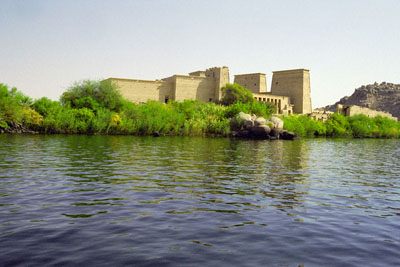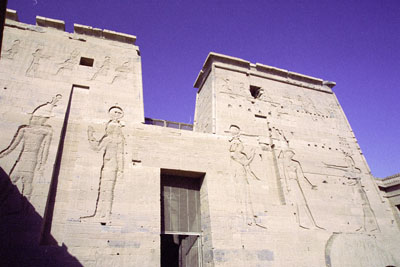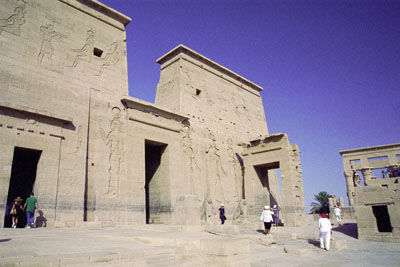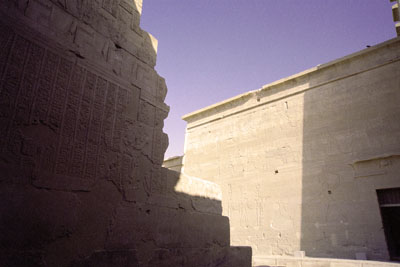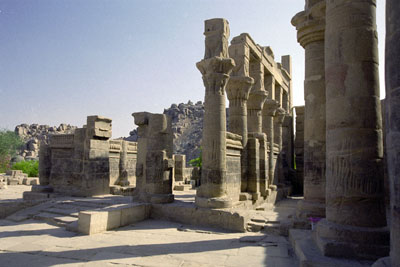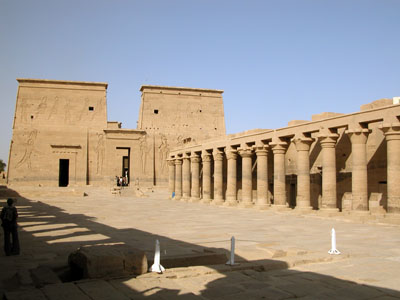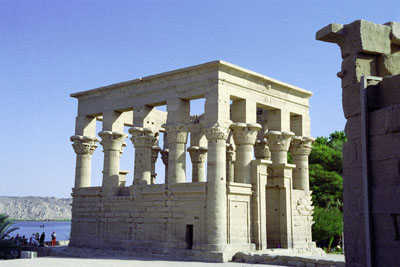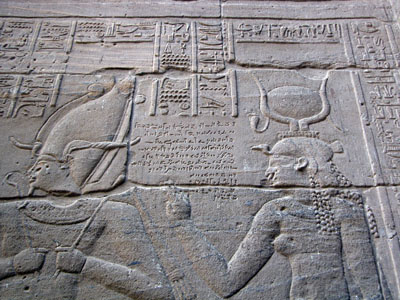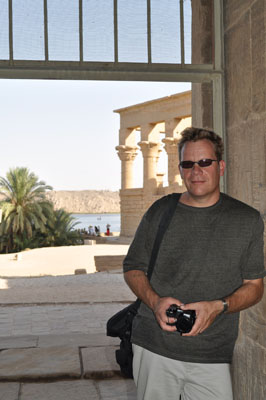One of the later temples; The Temple of Philea was dedicated to Isis. Though the cult of Isis in the area goes back far earlier, the earliest remains of this temple date to third century BC and the reign of King Nectanebo I, the last native king of Egypt. Isis had more staying power than many of the her Egyptian contemporaries and her name was worshiped here well into the 6th century AD - long after Christianity had become the dominant religion in Egypt.
Next to Abu Simbel, this was probably my favorite monument from Upper Egypt for a couple of reasons. It is a well preserved and beautiful temple. It is also in one of the more romantic settings for an ancient temple. Instead of a location in a city suburb with sprawl pressing in from all sides, it is located on a pleasant, almost idyllic island. Philea was moved here from it's original location between 1972 and 1980 to save it from the rising waters of lake Nasser. Apparently, the island was landscaped to resemble the temple's original location of the Isle of Isis. The only access is by boat, which keeps the crowds down a bit and the island location offers a cool breeze that makes it a very pleasant stay.
The temple is part a UNESCO world heritage site called the "Nubian Monuments" and includes monuments between here and Abu Sibel to the south.
All photos on this page are originals by & copyrighted by Daren Willden, unless otherwise stated. All rights reserved.
